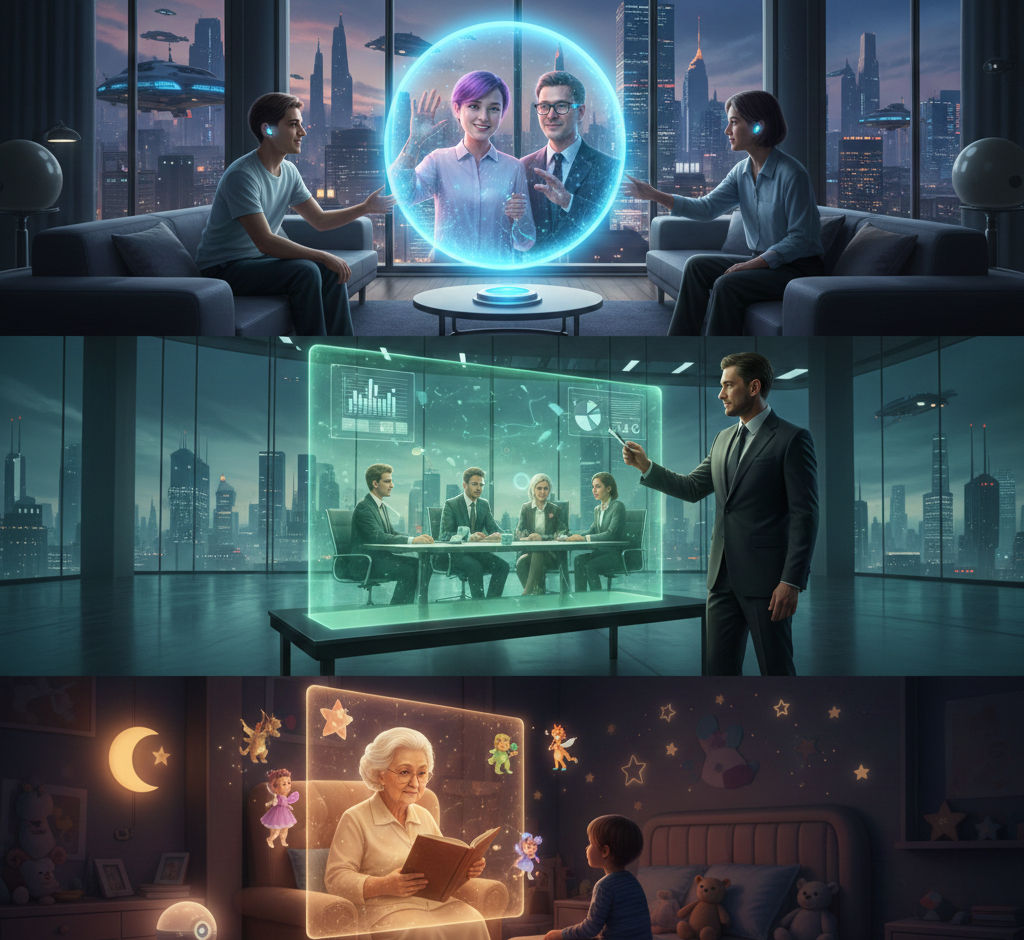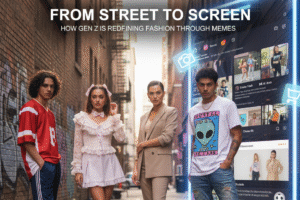How Hologram Calls May Replace Video Calls Soon: The Future of Communication

For decades, video calls have been the peak of digital communication. From FaceTime to Zoom, we’ve relied on flat screens to stay connected. But that era might be ending soon. The next big leap — hologram calls — is already here, and it’s advancing faster than expected.
Hologram calls promise something video calls can never fully deliver: presence. The feeling that someone is standing right in front of you, even if they’re thousands of kilometers away.
Let’s explore how hologram calls are emerging, the technology behind them, and why they might replace video calls sooner than we think.

What Exactly Are Hologram Calls?
A hologram call uses 3D projection technology to recreate a lifelike, full-scale image of a person in real time. Instead of seeing someone on a flat screen, you see them as a 3D figure — standing, moving, gesturing, and interacting naturally.
A hologram call offers:
- 360° view of the person
- Life-size, realistic projection
- Natural eye contact and body language
- Enhanced sense of presence and emotional connection
- This tech doesn’t just upgrade video calls — it reimagines them.
Why Hologram Calls Are Growing So Fast
- 5G and Soon 6G Will Make It Possible
Hologram calls need high bandwidth and ultra-low latency.
With 5G already rolling out globally, real-time 3D rendering is finally becoming feasible.
6G networks (expected by 2030) will take this even further, making hologram streaming smooth and lag-free.
- Next-Gen Cameras and Sensors
Depth sensors, LiDAR cameras, and AR scanners built into new phones allow them to capture detailed 3D images — perfect for hologram projection.
- AI-Powered Rendering
AI now reconstructs human models in milliseconds.
This allows phones or AR glasses to generate a moving 3D hologram in real time.
- The Rise of AR Glasses
Apple Vision Pro, Meta’s AR glasses, and future lightweight smart glasses will act as displays for hologram calls — no giant hardware required.

Industries Already Testing Hologram Calls
✔ Corporate meetings
Companies like Cisco and Microsoft have tested hologram telepresence for board meetings and presentations.
✔ Education & Training
Imagine learning anatomy from a life-size hologram of a doctor demonstrating procedures.
✔ Healthcare
Doctors can hold remote consultations with 3D holograms of patients or specialists.
✔ Entertainment
Performers can appear at events without physically being there — hologram concerts are already happening.
✔ Retail
Brands are testing hologram customer service assistants in stores.
Why Hologram Calls Could Replace Video Calls
- More Human, More Real
A hologram feels like a physical presence. It brings back natural gestures, distance cues, and emotional connection — something video calls often lose.
- No More Flat Screens
Holograms don’t require looking into a phone or laptop. Projections can appear in your room, making conversations more immersive.
- Perfect for Remote Work
Remote teams will feel like they’re sitting together, even if they’re globally scattered.
- Better Collaboration
3D models, designs, and objects can be viewed and interacted with holographically.
Great for architects, engineers, creators, and brands.
What Still Needs Improvement
- Affordable Devices
Right now, hologram tech is still expensive. Mainstream adoption needs cheaper, portable solutions.
- Battery & Processing Power
3D rendering drains devices fast. Companies are working on more efficient chips.
- Universal Standards
Just like video calls needed apps (Zoom, Meet), hologram calls need cross-platform compatibility.
When Will Hologram Calls Become Common?
Experts predict:
- 2025–2027: Hologram features appear in premium devices
- 2028–2030: AR glasses become as normal as smartphones
- 2030 onward: Hologram calls may become a default mode of communication
In other words: they’re coming much sooner than most people expect.
Hologram calls won’t just replace video calls — they’ll transform how we connect, work, learn, and socialize.
Just like video calling felt futuristic in the early 2000s, hologram calling will soon feel normal.
The future of communication is 3D, immersive, and incredibly real — and it’s right around the corner.








